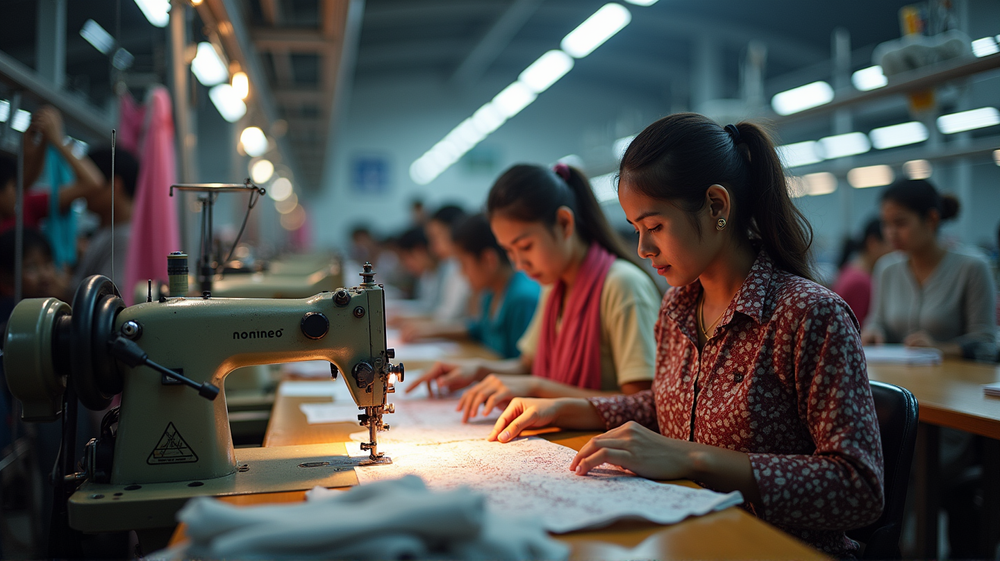Race Against Time: Bangladesh's RMG Productivity Challenge
In the high-stakes world of global garment manufacturing, productivity reigns supreme. For Bangladesh—the second-largest exporter of ready-made garments (RMG) globally—the challenge is not just to produce at scale but to do so smarter and faster. As the markets evolve towards agile and sustainable production, understanding and bridging the productivity gap with other Asian nations such as Vietnam, India, and Cambodia has become crucial for driving growth and strategic investment.
RMG Productivity Bangladesh: A Comparative Snapshot
In the competitive landscape of garment production, Bangladesh has made significant strides, yet still faces challenges in achieving the efficiency levels of its Asian counterparts. As stated in Zoom Bangla News, Bangladesh’s average labor productivity dances around 40%-45%, while Vietnam surpasses 60%, propelled by higher automation and technical prowess. India reveals a varied spectrum, with clusters like Tiruppur attaining 55%-60%. Meanwhile, Cambodia, mirroring Bangladesh, benefits from smaller, adaptive production strategies.
Crucial Factors Behind Bangladesh’s RMG Productivity
Key factors impacting Bangladesh’s RMG productivity include:
- Skill Deficit: The absence of formal technical training leads to inconsistent output and prolonged production cycles.
- Limited Technology Usage: Automation is prevalent only in large-scale factories, while many SMEs still depend on manual processes.
- Inefficient Line Management: Inadequate workflow designs sap line efficiency.
- Worker Welfare Compromises: Subpar working environments and excessive overtime detract from worker concentration and productivity.
Addressing these challenges is a priority for Bangladesh as it strives for productivity parity with higher-performing countries.
Learning from Asian Leaders: Enhancing Productivity
Countries like Vietnam and China demonstrate how strategic investments can bolster productivity through:
- Technical Education: Establishing training centers and partnerships that churn out a capable workforce.
- Adoption of Lean Practices: Implementing tools such as 5S and Kanban to boost efficiency and minimize waste.
- Automation Expansion: Leveraging automated cutting and sewing increases both quality and output.
Bangladesh is making progress with the development of industrial zones like BEPZA and initiatives supported by the World Bank, which are introducing new technologies and sustainable infrastructure.
Path Forward: Closing the Gap
To improve productivity, Bangladesh needs concerted efforts across sectors:
- Upskilling Initiatives: Enlarge programs like NSDA to upgrade skills for modern production.
- Digital Management Systems: Promote ERP and MES to track and enhance efficiency.
- Worker Support Investments: Improve healthcare and safe working conditions.
- Technology Incentives: Encourage SMEs to adopt productive technologies with tax incentives.
Collaborative efforts with buyers in sharing best practices can further enhance productivity outcomes.
According to Zoom Bangla News, Bangladesh’s pursuit of enhancing RMG productivity is vital not just for competitiveness but for sustainable industry growth, ensuring a stable future for the thousands employed within this critical sector.




